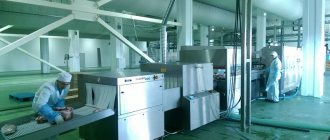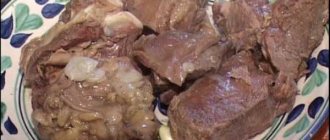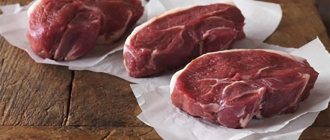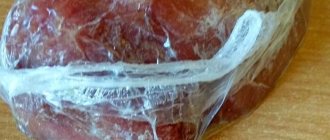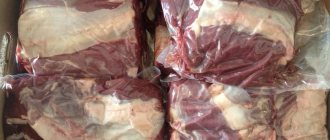Refrigerators appeared in Russia only in 1901. Before this truly revolutionary invention, our ancestors resorted to very clever ways of storing food - from frogs in milk and birch sticks in cabbage to wells and glaciers.
Factrum has collected the most interesting ways to store food in Russia.
How our ancestors preserved food
The refrigerator, which is indispensable for us, was created more than 100 years ago. At first, only a rich person could afford an expensive unit. Over time, more and more companies began to produce them. And, despite the fact that a high-quality unit is still expensive, it is an important component of every home. Let's imagine a situation - the electricity is turned off, the refrigerator is broken, or there is no room in it for additional products. But we need to preserve them - what should we do? After all, it is not always possible to quickly run to the market and purchase an additional unit. The best thing to do is to pay attention to the folk wisdom accumulated over centuries and resort to simple advice. There are different types of food preservation besides the refrigerator:
- using a cellar where the optimum temperature is maintained;
- conservation;
- drying.
We all know that temperatures underground are lower than on the surface. For this reason, in the old days, our great-grandmothers, like modern villagers, dug deep cellars in which the temperature was maintained at about 0 degrees. At the same time, the products were not frozen and did not spoil. But only fruits, vegetables, cereals, butter, eggs, and milk could be stored in them.
Middle Ages
In ancient times, the city was fed by the village. Almost every day, trading people flocked to the square, carrying a variety of food on carts. Chickens, ducks, and geese were delivered live in the summer and frozen in the winter. Pork was smoked and dried, bird carcasses were covered with salt and dried. Game was salted in barrels to prepare corned beef. Food was stored in so-called cages under the main buildings or in storerooms. Special rooms were left dark and located away from heated buildings and stoves used for cooking.
Interesting: Why are my feet cold? Reasons, photos and videos
Wooden and clay containers were used to store food
Sausages have been prepared at all times. Smoked products were hung from the beams of cellars or underground floors. Wooden and clay containers were used to store food. Boiled and fried, they were put into pots, poured with melted internal fat. It prevented the penetration of air into the delicacy, keeping the sausage edible for up to six months (until the fat went rancid). Methods of arranging glaciers, pickling with vinegar, salting and drying fish came from the same era.
How were perishable foods stored?
When it comes to quickly perishable ready-made meals, the cellar was not entirely suitable. Microbes stop multiplying in them only at sub-zero temperatures. Therefore, they did not cook much, but enough so that every member of the family was satisfied and there was nothing left. The next day, fresh food was prepared. If there were leftover food - porridge, potatoes - they were added when preparing the same pancakes, pies, pies, etc.
In the old days, in the absence of refrigerators, electricity and sealing lids, housewives chose another optimal and useful type of food preservation - pickling. And now we all enjoy eating pickled cucumbers, tomatoes, and cabbage prepared according to the same recipes. Previously, for this it was enough to put washed vegetables in cold well water with the addition of salt.
Sweet fruits - apricots, quinces, apples and other names were preserved in the form of jam. Sugar was rare, so during cooking, sweet herbs were added and mixed with honey.
Until now, one of the best methods of preservation is drying. If geography allows, you can place the same cut fruits and vegetables on the roof under the hot sun.
Storing food in rural areas before the advent of refrigerators
Cellar
It was easier for villagers or owners of private houses. Somewhere in the courtyard they dug out cellars and installed an underground floor. The prepared dishes were taken out into the cool of the dungeon. There were also barrels of salted poultry meat and lard, pork hams hanging, and tubs of ready-made homemade sausages covered in lard.
Cellar glacier
More inventive and wealthy peasants prepared for summer in winter. Poultry and livestock slaughtered in the fall, which escaped salting, were placed in a glacier. It was lined with wooden planks or an earthen pit filled with ice cut from the river. The roof of the unique freezer was made of thick boards knocked together that did not allow heat to pass through. Sawdust or earth was poured on top of it, adding tightness to the structure.
Homemade cheeses were made from excess milk. The curdled mass was placed in a dense cloth and hung from crossbars to remove the whey. The resulting circles were dipped into brine, a highly concentrated saline solution. Before use, soaked in milk or clean water.
Where was the meat stored?
Beef, pork, rabbit, chicken or other types are all perishable foods in which dangerous microbes multiply quickly. And there were several ways to store them without refrigeration.
- They distributed it to neighbors. There was a custom - a pig was slaughtered at a certain time and shared with loved ones, relatives or neighbors and remembered who got which piece. Then, when it was the turn of those with whom it was shared, the “debt” was returned. That is, people tried to help each other. It is worth understanding that meat was not used so often, but only on major holidays or cooked only for a sick, weak person.
- Drying - the meat was boiled in brine (very salty water), hung in the hot sun, covered with a thin cloth and dried.
- Stew. The meat was stewed for a long time in the oven, and when finished, it was laid out in containers, poured with boiling lard and brought into the cellar. The fat did not allow air to enter, and under vacuum conditions bacteria had no chance to reproduce.
Drying, salt and wet cloth
Drying and drying food has been around since time immemorial. This method of preserving provisions for a long time greatly helped the Slavs not only during the long winter months, but also during periods of crop failure and hunting failures. They dried berries and mushrooms, vegetables and root vegetables. Meat and fish were thinly sliced, salted and kept in a draft - in this way the food was preserved for several months.
Salt became a real salvation in the struggle for storing food, which is why it was so valued in Rus'. Everyone’s favorite pickled cucumbers, tomatoes, sauerkraut, mushrooms and other pickles - all these are tasty “consequences” of searching for long-term storage of supplies.
Salt was used not only in the familiar methods of sourdough and pickling, it was also generously sprinkled on cloth, in which many products, including bread, were then wrapped - salt also has bactericidal properties.
By the way, fabric was also used everywhere to preserve food: it was noticed that natural cooling occurs when liquid evaporates, so they wrapped bottles and other containers with wet cuts and tried to keep them in ventilated areas.
Where did they get ice without refrigerators and electricity?
It turns out that you don’t need to have a refrigeration unit to get ice even in the hot season. Our ancestors made a deep hole, lined it with straw and shavings, and carefully dried the surface. And when the cold came, they collected large blocks of ice from the rivers and put them in the same pit. Blankets, bales of hay and straw were laid on top so that the heat did not penetrate deep into the ice, and the ice was preserved even on summer days. And if it melted, it did so very slowly, which made it possible to use it as a natural refrigerator. Meat, poultry, fish, dairy products, smoked meats and pickles were placed in it.
This is how our ancestors adapted in ancient times.
How was food stored in Rus'? there were no refrigerators
Watch this video on YouTube
How in Rus' they kept food fresh without refrigeration
Watch this video on YouTube
Do you want to understand better than others?
- Why you need to store food in the refrigerator - Food is stored in the refrigerator to extend its shelf life, since this device creates conditions that are optimal for slowing down the development processes...
- How can you keep food fresh without a refrigerator: top 17 ways - If the refrigerator malfunctions or in the event of a prolonged power outage, most housewives wonder how to keep food fresh. The heat promotes...
- How to properly store food in the refrigerator and maintain order - Probably, this has happened to everyone: you open the refrigerator in search of something tasty, but, having glanced at the shelves, you close the door without profiting from anything....
- Is it possible to freeze milk in the freezer for later use - Country cow's milk is not only a tasty, but also a healthy product. It is rich in vitamins and microelements that are necessary for the proper functioning of our body. Drink…
- Why does food freeze in a Bosch refrigerator - Reasons for increased cold formation What should you do if the refrigerator freezes food excessively in the refrigerator compartment? Often the reasons for this phenomenon are not related to a breakdown...
City everyday life
Chest of drawers for groceries
City dwellers of those years did not shop for many days in advance. They took a little meat, fresh fish and boiled sausage, cooked it and ate it right away. The remains of dinner, cookies and sweets, vegetable oils were put away in chests of drawers and cupboards. Previously, these furnishings were large, with many compartments and drawers, locked with a key. Of course, it wasn't cold there. Doors without glass blocked daylight and sunlight, slowing down the spoilage of food.
The remaining salted fish or those purchased for future use were poured with vegetable oil. It did not allow the oxygen necessary for the proliferation of putrefactive bacteria to pass through, keeping the product fresh. Smoked sausage was simply hung near the stove. The rocking chair gradually dried out, but did not disappear.
They did things differently with milk and butter. The first was simmered, the second was reheated, removing excess moisture. Even in hot weather, processed dairy products did not spoil for several days. The main thing is not to leave them in the light. Pots with borscht and soup were placed in a large container filled with cold water. As it warmed up, it was replaced with a fresh one.
Interesting: Does the refrigerator heat the room too much?
It was easier in winter, late autumn and early spring. Perishable food was wrapped in paper, placed in string bags or bags and hung outside through the windows and taken out onto balconies. The houses under construction provided space for seasonal “refrigerators”. They were placed under the window sills in the kitchens, leaving a through hole in the concrete leading to the street. The temperature was regulated by simply plugging the hole with rags or paper.
Vinegar wrap
Vinegar has been used as an excellent preservative for a very long time. For storage, the meat product was wrapped in a cloth soaked in a vinegar solution: add 3 tablespoons of sugar to 500 ml of vinegar. To increase shelf life and add a piquant taste, the meat was sprinkled with pepper before wrapping. The bundles were placed in the cellar, hanging so that they did not touch anything. If you change the fabric daily, the freshness will remain for two weeks. Before cooking, the meat had to be washed thoroughly.
Methods for preserving meat products that people have used for centuries are still relevant today - when going outdoors or when the refrigerator breaks down.
Drying
One of the ways to prepare meat without chemicals and other additives is drying, that is, dehydrating the meat until it turns into such a dry product that microbes simply have nowhere to multiply.
Compared with traditional sun drying, an electric dehydrator is faster and safer. It allows you to adjust the texture of the finished product and completely dry it in an antimicrobial environment.
The temperature conditions of most dehydrators will help get rid of harmful and tenacious bacteria such as E. coli (salmonella).
In addition, modern technologies make it possible to pack dried or jerky meat into vacuum bags, which significantly increases its shelf life at room temperature.
Specifics of hot and cold preservation
If meat needs to be preserved for a long time, it is recommended to resort to the preservation method. In this case, you will also be able to do without a refrigerator, but the procedure is much more complicated than the previous manipulations. We should not forget that the slightest violation of the technology of sterilization and sealing of jars with specific preservation is fraught with serious health consequences - from food poisoning to the development of botulism.
- Hot preservation. First, the main component is boiled in a saline solution with spices. It should be about two-thirds cooked. Then it is transferred to sterile, still warm jars and filled with the remaining broth after cooking. You need to leave at least three centimeters of free space on top. It is unacceptable to leave air bubbles between pieces of meat. They need to be removed using a sterile needle. Then we wipe the containers, seal them tightly and place them in the sterilizer.
- Cold preservation. Place pieces of raw meat, salted and treated with spices (optional), into pre-prepared jars. No meat broth or other liquid is used in this approach. During sterilization, the product will release a sufficient amount of juice. This is a longer option for processing meat, but as a result the fibers are very soft, gently salted, but do not lose their special texture.
We recommend: Storing dried mushrooms: how, where, how much?
The duration of sterilization is influenced by several factors: the amount of meat, the volume of the container, temperature and even altitude. After completing the manipulation, you need to make sure that the lids are tight. Store such a product in a cool place, protected from direct sunlight, then the quality and taste of the meat will be preserved for several years. It is recommended to check banks regularly. It is better to throw away containers with swollen lids or strange sediment.
Obviously, even in the absence of a refrigerator, there are many techniques that can preserve meat for a long time and endow it with pronounced taste characteristics. But we must not forget that these approaches can only be used when processing high-quality, fresh product. You cannot carry out such manipulations with defrosted meat! You need to start working with the component as quickly as possible; if this is not possible, you will have to keep it in the refrigerator for some time.
Leftover food
Indeed, rather than looking for food—like a 14,000-year-old piece of deer jerky—archaeologists mostly hunt for evidence of food preservation efforts.
For example, at an 8,600-9,600-year-old excavation site in Sweden, researchers discovered a trough-shaped pit filled with more than 9,000 fish bones, according to a 2016 Journal of Archaeological Science article. Outside the trough, the remains of perch and pike were most often found. However, in the pit, most of the specimens were roach, a small, bony fish that is difficult to eat without some kind of processing. About a fifth of the roach bones showed signs of acid damage. Scientists have concluded that the pit was used for fermentation, making it the oldest evidence of this method.
Similarly, in 2022, the Journal of Anthropological Archaeology published a study in which archaeologists analyzed more than 10,000 animal bones dating back approximately 19,000 years, found in what is now Jordan. Almost 90% of them belonged to gazelles, and they were found next to fires and post holes with a diameter of 5-20 centimeters, which probably supported beams of some simple design. Based on this, scientists came to the conclusion that the pillar pits were part of a device for smoking and drying meat.
Return of freshness
If an unexpected failure occurs during the storage process, the main thing is to take timely action. Slightly rancid foods are popular in the East; in India they are flavored with curry, and in Thailand with hot pepper. Spices not only eliminate unpleasant odors, but also disinfect food. There are, however, simple ways to try to restore freshness to the meat even before cooking:
- If pork and beef have spoiled a little, they can be soaked in sour milk, which draws out spoiling blood and makes it soft, and then kept in cold water. You should not use whey for this, as it transfers its acid to the meat.
Slightly spoiled pieces should be kept in water with hot coals for some time.- Before cutting, you can rinse the meat with water in which a little charcoal is mixed, and then rinse it clean.
- Old books on home economics report that meat spoils faster during a thunderstorm, and recommend using a lightning rod - cover it with fresh nettles and stick a metal object into the piece: a knife or fork.
How to preserve meat for a short period of time
If the electricity in the house is turned off, the refrigerator is broken, or a long trip is ahead, then without certain conditions the meat may go to waste. Let's look at ways to solve this problem.
Ice
Using ice, meat can be preserved for up to 3 days, but everything will depend on the conditions. Pour ice cubes into a clean container and place the meat. The frozen liquid should completely envelop it. Then close the container tightly and wrap it with cloth. It will make it difficult for the ice to quickly thaw and increase shelf life. If possible, repeat the procedure every 3-4 hours. This is the only way the product can last as long as possible.
It is recommended to prepare ice in the freezer in advance, as it will be useful for storing any food.
Thermal package
The thermal package is capable of maintaining a low temperature for up to 15 hours, but the thermal bag almost doubles the period. The maximum effect will be achieved if the meat is frozen.
Fat
Coat a whole piece of meat with pork or lamb fat. It forms a film that blocks the penetration of bacteria. Wrap the meat in paper or cloth and place in a cool, dark place. The period for preserving meat using this method reaches 96 hours.
scalding
Cut the meat into small pieces and place in a saucepan. Fill with water, add 5-6 tablespoons of table salt and bring to a boil. Cook for 3-4 minutes and turn off the stove. After it has cooled, place it in a container, close it tightly and place it in a cool, dark place. The maximum storage period is no more than 48 hours.
Horseradish and nettle
In nature, you can use horseradish or nettle leaves. Brush the pieces of meat with salt and wrap with herbs. If you are planning a long trip, then you should not use mayonnaise or a similar sauce as a marinade; it is better to use salt and vinegar.
Vinegar
Rinse a whole piece of meat with clean water and allow to drain. Then soak in 9% vinegar. Wrap with cotton cloth and place in a container with a tight-fitting lid. Store in a cool, dark place.
Repeat the procedure every 7–8 hours, first pouring the collected liquid into containers. It speeds up the process of meat loss.
Milk
Rinse the meat with water first and place it in a container. Pour cold milk over everything, close the lid tightly and place in a cool, dark place. The maximum storage period does not exceed 48 hours.
Honey
Take pure honey or honey mixed with water and treat the meat with it. Then place it in an opaque container and close the lid tightly. Store in a cool place away from direct sunlight.
Sorrel
Wash fresh sorrel leaves to remove dirt and remove damaged leaves. Rinse the meat and let drain. Then wrap it in greenery and secure with thread. Replace the leaves with fresh ones every 6-7 hours. If the conditions are met, the product will be stored for about 48 hours.
Lemon and cabbage
This method is more relevant for beef and rabbit meat. Use a mallet to beat fresh cabbage leaves and wrap them around the meat. Then cut the lemon into slices and add the next layer. The more cabbage and lemon you add, the longer the product will last.
Nettle and bird cherry
Bird cherry or nettle will help you preserve beneficial properties in nature. Treat the meat with saline solution and wrap it with plant leaves. They have an antibacterial effect and can keep the product for up to two days, but do not forget to replace the leaves.
Burning
The procedure is reminiscent of frying shish kebab, but without the use of marinade. Divide the meat into 100–150 g pieces and place on a skewer. Place on the heat and turn constantly until a crust appears. Then remove and let cool. Place it in an opaque container and close tightly. Depending on the air temperature and storage location, meat will not spoil in this way for up to 48 hours.
Using an ice cellar
Despite the lack of electricity, the villages used to have their own refrigerators. In addition to the usual cellar, they also made an ice cellar. In the warm season, an underground room was dug, its floor was covered with straw or shavings, dried and smoked with firebrands. Then in winter or closer to spring, while persistent frosts still persisted and the ice was strong, blocks of ice were brought from a lake or river and snow was hauled in. All this was laid out on the floor in the ice cellar. The lid was covered with old blankets and bedspreads so that as little heat as possible penetrated inside. Even in hot weather, the snow and ice in it melted slowly, and inside the cellar the temperature remained at minus 5-8°C. Even if the ice melted, the cellar would still remain dry, as the water would soak into the earthen floor. In such conditions it was possible to store salted, smoked and even fresh meat, lard, fish, poultry, sour cream, cottage cheese, and milk.
A little history
Even primitive hunters successfully solved the problem of how to preserve meat without refrigeration: they buried it in the snow in winter, and dried it in the sun in summer. These methods are still relevant today, although technological progress has freed people from the need to rely on the mercy of nature. The first machines for making ice were created in the 70s of the 19th century by the German engineer Karl von Linde, and in Russia refrigerators appeared only at the beginning of the 20th century; they were considered a great rarity and were expensive. Therefore, we had to prepare as many dishes as we could eat in a day. No one cooked for the week ahead, and the food did not linger.
To prepare lunch or dinner, they took exactly as much as was needed for one family; there was practically no surplus left. An exception to the rule was homemade bread - it was baked for several days, and the stale one was cut into crackers. The dishes left over from the evening were creatively processed in the morning. For example, cabbage or potatoes were used to fill pies. They added milk to dough or porridge, made sour cream or churned butter, and treated cowless neighbors. When the milk turned sour, they put the dough on pancakes or pies. Meat was rarely cooked in the summer - on church holidays or for the sick.
If they couldn’t eat it themselves, they again treated those living nearby, and then the neighbors slaughtered the cattle, and it was their turn to share. This approach maintained good relations and eliminated the need for supplies. If the question arises about how food was stored when there were no refrigerators, a simple answer suggests itself: fresh ones were cooled in cellars and on a glacier, and for long-term storage they were processed - salted, smoked, dried, dried and canned. I remember a delicious recipe for stew, when meat stewed in the oven was laid out in clean pots and covered with lard. The supplies prepared in summer and autumn were eaten in winter and spring.
